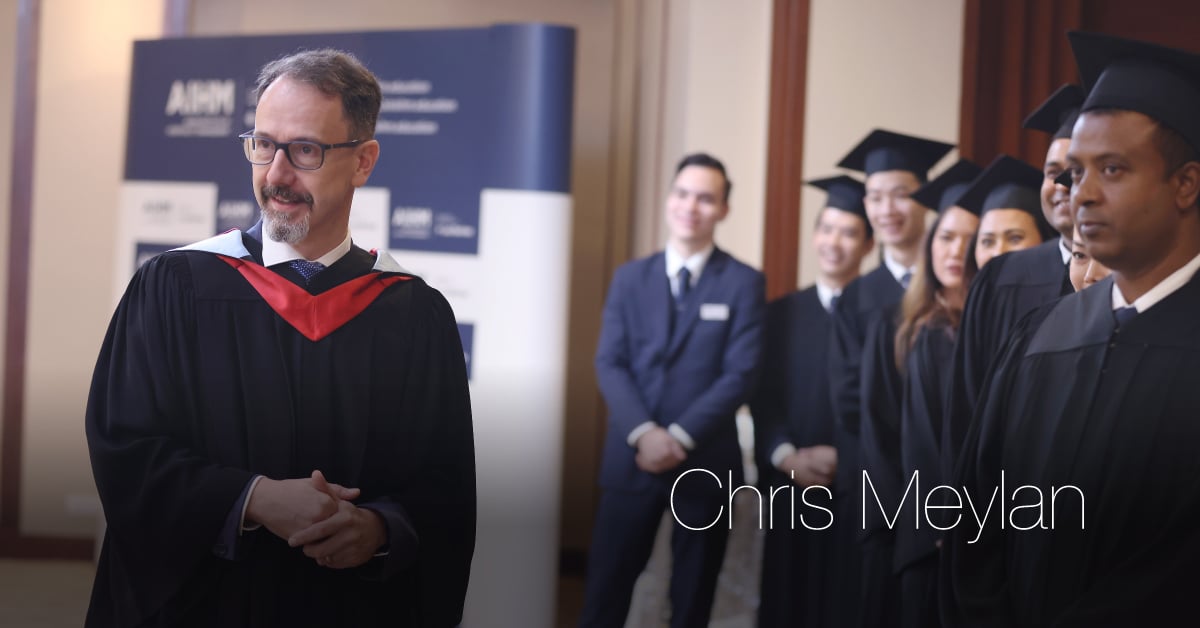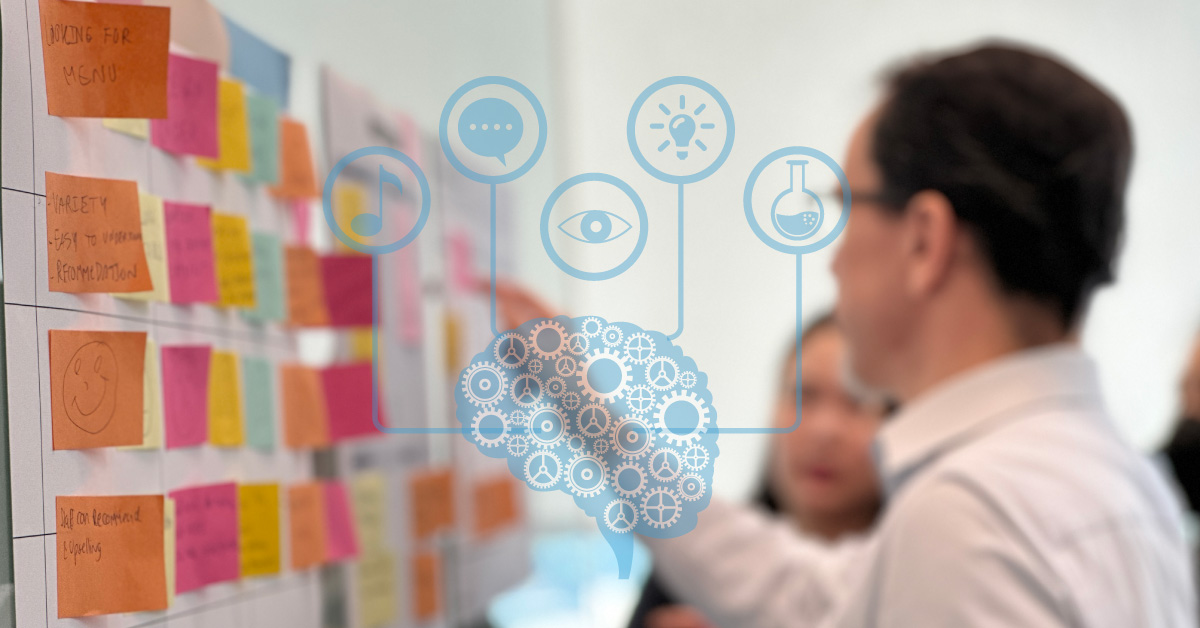The Impact of AI on Teachers

Open any popular news magazine today and you will find articles proclaiming artificial intelligence’s status as a major disruptor of industry. AI is changing the way we work. It’s transforming the market. It’s upending the working processes we’ve used for years, the tools we’ve come to rely on, the speed and efficiency of completing tasks, and the realm of what’s possible—or at the very least, feasible. AI isn’t just impacting the activities of corporate offices though. Those of us in the education sphere are feeling its disruptions at least as equally.
Our students now have the ability to use and abuse AI. We’re sending them out into a workforce where AI tools will increasingly be a part of their realities. The ways in which we as educators need to teach and evaluate our students have shifted seemingly overnight. AI poses immense opportunities and challenges, and faculty are feeling the anxiety caused by its rapid development.
Take a look at the responses from a comprehensive survey of faculty across several schools at Harvard University. While there is optimism amongst professors, the majority of instructors are nervous about AI’s impacts. What does this mean for administrators in higher education? We have to address our faculty’s concerns.

(The Harvard Crimson Faculty Survey 2023)
The anxiety you can see expressed above goes beyond broad-based concerns about the future. Another survey of university faculty found that only 14% feel confident in their ability to use AI in their teaching. In addition to the need for establishing a clear student policy on the use of artificial intelligence technologies, schools must support teachers in updating their ‘toolboxes’ of pedagogical methods.
At the same time, educators should be proactive in exploring, analysing and formulating their own approaches to artificial intelligence’s role in their individual teaching processes. I would like to propose four key areas in which educators need to investigate the potential role of AI in their professional roles. Namely:
- AI as Subject Matter
- AI in Instructional Design
- AI as Student Support
- AI as an Evaluation and Assessment Tool
To be clear, I’m not suggesting the every teacher needs to integrate AI into all four of these areas. What I am stating is that if teachers do not at least think critically about the role AI might play in these areas, they are doing their students a disservice. We should neither stick our heads in the sand like a proverbial ostrich and ignore AI nor adopt these technologies haphazardly. Just as we encourage students to explore with an open mind the topics we teach and to think carefully about how they approach these topics and how they might apply what they are learning in a personalised, individualised way, we as teachers must do the same. AI is here. It’s time to grapple with it.
AI as Subject Matter
Graduates from our institutes are beginning to enter a workforce where AI is part and parcel of their lives. As one our most fundamental responsibilities is to prepare students for their lives post-graduation, we must take AI into account in our curricula and lessons. I have previously written about the role of AI in a future-forward pedagogy. In short, based on my own post-graduate and continuing studies into pedagogy, I’m a firm believer that educators should adopt a constructive and positive approach to technology.

AI is a fact of contemporary life. Technologies that utilise AI are shaping and reshaping lives. We must integrate lessons on ethical and effective AI use into our coursework. Importantly, we need to teach students not only how AI can be used to carry out tasks expeditiously; teachers must emphasise the vital role of critical thinking when leveraging AI technologies. AI is a tool, not a magical solution. Like any tool, it has its limitations and shortcomings. Artificial intelligence is not a replacement for human intelligence but a complement to it, and teachers must instruct their students in how to use AI appropriately and strategically as one tool among others.
AI in Instructional Design
Why has AI become such a prominent disruptor? Simply put: because it makes life easier. Certain tasks that take hours to complete with conventional methods can now be carried out in minutes or seconds. AI augments our capabilities. It helps us to work in a way that is smarter. If educators know how, we can utilise AI tools to develop additional scholastic resources and create engaging educational content that can lead to a better learning experience for students.
As we design our lesson plans and learning activities, tech tools such as ChatGPT, Claude and Perplexity can enrich our capabilities to produce compelling lessons. We can employ these platforms and similar ones in drafting teaching scripts, illustrative examples, test questions and even case studies.
Recently, I used ChatGPT to assist in developing a case study for my marketing class. I was able to generate a fully developed SWOT-PEST analysis that was highly useful as a teaching example but would have taken me weeks to create by myself. In formulating the case study with the use of ChatGPT, I was able to create teaching content tailored to my students’ context, the hospitality industry and my students’ level of understanding. Students were very engaged with the material, due in large part to its finely tuned adaptation to their particular needs. Rather than providing a sub-optimal example or a case study that would have been an absurdly inefficient use of time to produce, I was able to generate a wonderful learning resource that was just what I needed to reach and teach my students.

Using AI tools can help educators to generate initial drafts of lesson plans, aid in developing the structure of presentations, build worksheets or draft any other instructional materials based on specific learning objectives. The educator can then review and refine the AI-generated content. Not all ideas AI generates are great, but it gives you a good first draft. I’ve used AI tools in this way multiple times to assist in brainstorming ideas for activities I could carry out in my class. At AIHM, we strongly believe in the importance of active learning. We prioritise learning activities over lecture-based teaching. Active learning is pedagogically superior but not as easy to implement. An active-learning teaching approach requires an elevated level of creativity and instructional design thinking, and sometimes you can run out of ideas. AI can be advantageous in assisting with the time-consuming task of designing excellent, activity-centred lessons.
Another way I leverage AI is to employ it in sourcing or producing multimedia learning resources. Great teachers make their lessons engaging with videos, images, articles, simulations and other diverse forms of multimedia content. AI is fantastic for creating graphics and images to enhance lessons. I’m a big believer in the power of visuals, and sometimes you want to have a clear visual that shows what you’re trying to communicate. For example, I was teaching the concept of “invisible service” in my Customer Service Excellence course. I wanted to communicate the notion of a service provider being there to provide the service but not impeding on the experience. I decided to utilise DALL-E to create a visual. Generating the image took a few rounds of trial and error, and I’m still not 100% satisfied with it, but overall it’s a good representation of what I wanted to communicate.

AI as Student Support
A number of universities have begun experimenting with the use of AI chatbots to assist their students. The tasks carried out by chatbots vary in scope. They can be used to provide motivational messages, reminders of upcoming deadlines and even to answer student questions. AI tutors can be seen as an extension of already-available adaptive learning technologies that adjust to the needs and progressions of individual learners.
Can AI replace teachers? Rest assured: we’re not there yet. However, the possibility for AI to, in some ways, supplant current teaching tasks is closer than you might think. Dr. Ashok Goel is a professor of computer science at Georgia Tech and Director of the university’s Design & Intelligence Laboratory as well Chief Scientist at the Center for 21st Century Universities. He’s also the inventor of “Jill Watson”.
 (Photo credit: https://www.chronicle.com/article/when-the-teaching-assistant-is-a-robot/)
(Photo credit: https://www.chronicle.com/article/when-the-teaching-assistant-is-a-robot/)
Who or what is Jill Watson? She’s an AI Teaching Assistant. Goel debuted Watson back in 2016 in an online graduate-level computer science course on Knowledge-Based Artificial Intelligence. It was a large class—300 students—and Goebel worked with seven Teaching Assistants to answer students’ questions in the online discussion board. Six were human. One —Jill Watson—unbeknownst to students, was actually an AI. She proved popular with students. Some of them even nominated her for ‘Teaching Assistant of the Year’. Only at the end of the semester did Goebel reveal the secret. Jill has been assisting Goebel’s students and continuing to serve as an experiment in AI-assisted teaching ever since.
Most likely, you don’t enjoy access to Jill Watson. That doesn’t mean you don’t have highly developed AI tutors at your disposal. Instructors can leverage widely available platforms such as OpenAI’s ChatGPT and Microsoft’s Bing (in Creative Mode) to empower each of their students with their own personal tutor. While the personalised attention a tutor can provide improves student learning outcomes, it’s undeniable that many students do not have tutors; and unless you teach only a handful of students, your ability to offer one-on-one attention to each student is limited. AI enables a new level of individualised attention that was previously inaccessible.
You may wish to conduct individualised, AI-assisted tutoring in class. Provide students with a meticulously developed prompt you have tested and refined ahead of time. Be on hand for assistance, monitoring and guided reflection on the process of using AI as a learning tool.
 (Photo credit: https://www.linkedin.com/pulse/ethan-mollicks-masterclass-stanford-always-invite-ai-table-torres-z8t6c/)
(Photo credit: https://www.linkedin.com/pulse/ethan-mollicks-masterclass-stanford-always-invite-ai-table-torres-z8t6c/)
Using AI to tutor students on a granular, individualised basis poses tremendous benefits—when used properly. The effectiveness of AI as a tutor relies to a large degree on the quality of the prompts used. Ethan and Lilach Mollich, Wharton professors and Co-Directors of its Generative AI Lab, offer a wealth of guidance in designing AI prompts for personalised tutoring. They have explored a variety of ways teachers can use AI for instruction in the classroom—from the individualised tutoring mentioned above, to mentoring (which focuses on providing feedback), to coaching (which operates on the level of meta-cognition).
Using AI as a coach entails tasking AI with guiding students through reflective exercises. One common form of reflection is what Deborah J. Mitchell and Gary Klein term a “project pre-mortem”. This is a reflection exercise carried out during the early planning stages of a project. It encourages students to think through potential issues, using “prospective hindsight” to imagine risks and project outcomes in order to improve them before they occur. Of course, reflection after a project or unit of study is completed is also extremely beneficial to solidifying learning and ensuring it can be applied in the future to real-world scenarios.
(Photo credit:https://creately.com/diagram/example/kqm3RNc4t6v/pre-mortem-template)
Resources for Designing AI Teaching PromptsFor detailed discussion of developing individualised teaching prompts you can share with your students, see the work of Ethan and Lilach Mollich, Directors of the Generative AI Lab at the University of Pennsylvania’s Wharton School of Business: Assigning AI: Seven Approaches for Students with Prompts An excellent, comprehensive scholarly article filled with detailed guidance and numerous sample prompts. This is a digital goldmine for teachers. A user-friendly article in the Harvard Business Publishing’s Education section. Features simple guidelines for utilising AI for one-on-one student tutoring and one sample prompt. Another short article in Harvard Business Publishing. Offers guidelines for designing an AI prompt to elicit thoughtful feedback to students. Includes a sample prompt the authors use in their own MBA classroom. |
AI as an Evaluation and Assessment Tool
A very fertile area for exploring the use of AI in teaching is in its possibilities for giving feedback and evaluating student work. Of course, it has to be used ethically. Educators still need to read students’ submissions and assign grades themselves. However, AI possesses significant merits in assessing student work and offering observations and guidance.
I’ve tested ChatGPT’s potential for contributing to evaluations, and what I’ve seen is that it helped me to produce high-quality formative feedback quickly. By using AI, I was able to provide more substantive feedback than I would have had the time to produce only by myself.

Using AI also minimised my own personal biases. Most educators are probably aware of the research on how where a student falls in the stack of papers can affect the teacher’s evaluation of the work. Sometimes when you read one paper after another, it’s only human that your perception of the quality of what you’re reading changes. Furthermore, we gain an increasingly more comprehensive understanding or larger comparative data set as we read proportionally more instances of student submissions to the assignment. Using AI as a preliminary tool to go through each paper first ensures a more even baseline.
I’m particularly excited by the potential AI poses in the feedback process because feedback is one of the most effective ways to learn. Providing input to students is vital to their growth and development, and generating feedback is very time consuming. If we can find the right balance and the facets in which AI can contribute positively to the feedback process, our students will be able to learn even more effectively.
The Implications for Educators
Are we as teachers going to be out of a job? No, I can’t see a day when that will genuinely be the reality. AI provides new methods of pedagogy that enhance and augment what educators can achieve in their classes. Technology doesn’t replace the role of the educator. It transforms the role. The way I see it, AI tech furthers many of the educational transformations already well under way.
Today’s teachers are ‘facilitators of learning’. We design learning scenarios for our students. We build and nurture ideal learning environments. We develop and lead activities. We set the stage for our students’ own learning journeys and guide them along their paths. Contemporary teaching revolves more around instructional design than top-down teaching methods such as lecture or testing students’ abilities to simply memorize facts. We prioritise the learning process, helping students to acquire beneficial skills and build their own knowledge—understanding that these are the most valuable aspects of learning.
Information is at students’ fingertips. Teaching students’ to look at this information critically, to analyse it, to apply it to their own lives, to make use of it—that’s where our value resides. As our students’ futures (and present-day realities) change with the disruptions of AI, so must our teaching practices.

Impacts of AI on Education: A Series
Have you read the previous articles in this AIHM Higher series on the impacts of AI in education?
If you’re fascinated, nervous or excited about what the rapid developments in artificial intelligence mean for the education sphere, be sure to read the first post, “Exploring the Impacts of AI in Education” and the second, “The Impact of AI on Educational Institutions”. Following this post on AI’s impact on teachers, Chris Meylan’s final post in the series will address how AI is impacting students.
Follow AIHM on Facebook or connect with Chris Meylan on LinkedIn to be sure to catch the final post.


